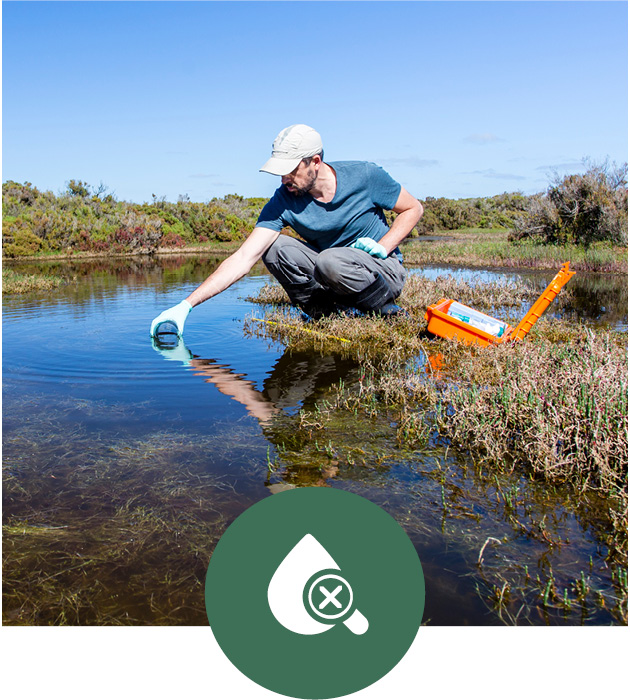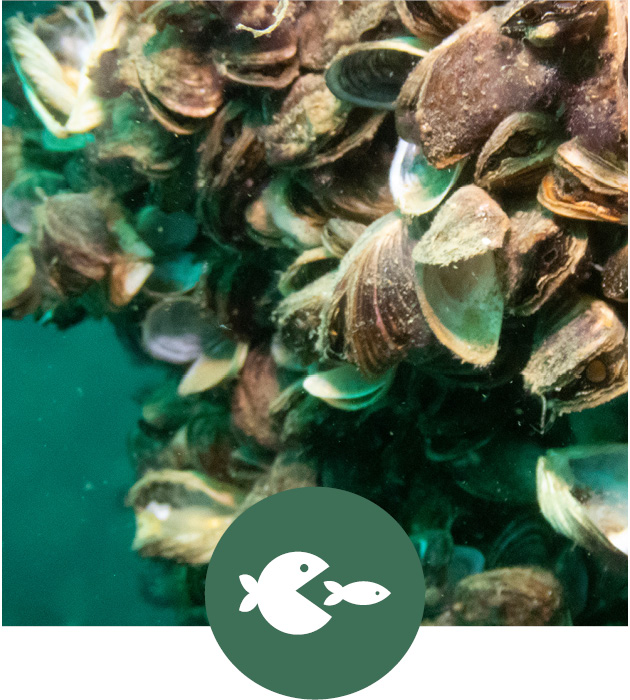INVASIVE SPECIES TAKING
OVER OUR WATERWAYS
Significant and Immediate Threats to
Ecosystems and Economies
The Mississippi River is facing a significant and immediate threat from invasive species. These species, such as zebra mussels, round gobies, rusty crayfish, Asian carp, and faucet snails, are causing irreparable damage to the river’s ecosystems and economies.
Invasive species are non-native plants and animals that have been introduced into an ecosystem either intentionally or accidentally. They can quickly overwhelm native species by outcompeting them for resources such as food, water, and shelter. This can lead to a decline in biodiversity and the loss of important ecosystem services.

Dysfunctional water quality wreaks havoc on the inhabitants of our precious aquatic ecosystem by wiping out fragile native species and allowing foreign parasites to breed and thrive.

Invasive species consume critical food sources for native fish, compete with them for food and habitat, displace them from their hiding places, and carry parasites that can cause disease outbreaks.

Invasive species wreak havoc on the delicate balance of our natural ecosystems. From reducing water clarity to stirring up bottom sediments rich in phosphorus, they play a big role in the growth of dangerous algae blooms.

Bighead and Silver Carp can eat up to a staggering 40% of their body weight every single day! Unfortunately, this insatiable appetite is having a major impact on the food availability for the native fish population.

Asian Carp alter the natural ecosystems
The invasive Asian Carp wreak havoc on lake and river ecosystems, disturbing the delicate balance of underwater life.
These fish not only uproot and consume vital aquatic vegetation, but also stir up silt and mud, resulting in murky and cloudy water. This further worsens the situation by blocking sunlight from reaching other plants and creatures below the surface. As they continue their destructive feeding habits, they pose a threat to water quality, causing damage to riverbanks and encouraging algae blooms.
Their presence even harms waterfowl habitat, as they dig through the lake bottom in their search for food.
